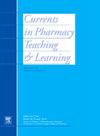Assessing the impact of a peer-led vaping prevention program
IF 1.4
Q3 EDUCATION, SCIENTIFIC DISCIPLINES
引用次数: 0
Abstract
Background
The study examines the effectiveness of Drugs of Abuse (DOA) presentations conducted by student pharmacists in high schools across Pittsburgh, PA. The goal is to assess students' understanding and perceptions of addiction and the impact of educational interventions.
Methods
Student pharmacists specially trained as Tobacco Treatment Specialists (TTS) presented the DOA presentation at five local high schools. Data was collected through pre- and post-assessment surveys. The surveys evaluated students' perceptions of addiction using a ten-question format. Statistical analysis was performed using One-Way Analysis of Variance (ANOVA) and paired comparison techniques. Qualitative data was collected from the student pharmacist presenters to assess the impact of the presentation on their own views of addiction.
Results
The post-assessment of 32 matched student responses showed little global shift in scores; however, specific questions showed improvements, indicating the training's impact on understanding addiction's lifelong nature and treatment benefits.
Differences were observed between schools (P = 0.004), with one school scoring higher on knowledge of addiction due to socioeconomic factors. Gender analysis showed females scored higher than males (P = 0.010).
Conclusions
The DOA presentations were well-received, achieving high participation and diverse representation. The educational intervention improved students' understanding of addiction on specific measures. The success of the program suggests potential for expansion and continued implementation to further enhance student awareness and education on addiction.
评估同龄人主导的电子烟预防项目的影响
该研究考察了宾夕法尼亚州匹兹堡高中学生药剂师所做的滥用药物(DOA)报告的有效性。目的是评估学生对成瘾的理解和感知,以及教育干预的影响。方法由经过烟草治疗专家培训的学生药师在当地5所高中进行DOA报告。通过评估前和评估后的调查收集数据。调查用十个问题的形式评估了学生对成瘾的看法。统计分析采用单因素方差分析(ANOVA)和配对比较技术。从学生药剂师演讲中收集了定性数据,以评估演讲对他们自己的成瘾观点的影响。结果对32名匹配学生的后测结果显示,得分的整体变化不大;然而,具体问题显示出改善,表明训练对理解成瘾的终身性质和治疗益处的影响。学校之间存在差异(P = 0.004),由于社会经济因素,一所学校在成瘾知识方面得分较高。性别分析显示,女性得分高于男性(P = 0.010)。结论DOA报告会反响良好,参与率高,代表性广。教育干预在具体措施上提高了学生对成瘾的认识。该计划的成功表明了扩大和继续实施的潜力,以进一步提高学生对成瘾的认识和教育。
本文章由计算机程序翻译,如有差异,请以英文原文为准。
求助全文
约1分钟内获得全文
求助全文
来源期刊

Currents in Pharmacy Teaching and Learning
EDUCATION, SCIENTIFIC DISCIPLINES-
CiteScore
2.10
自引率
16.70%
发文量
192
 求助内容:
求助内容: 应助结果提醒方式:
应助结果提醒方式:


